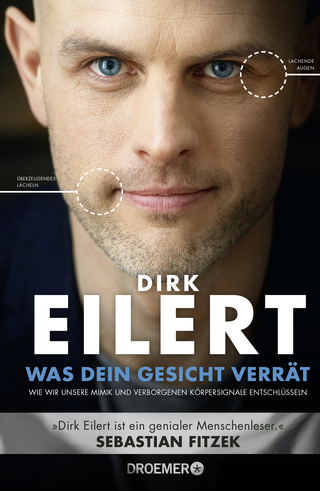
Criminological Theory
SAGE Publications Inc (Verlag)
978-1-4833-5952-6 (ISBN)
- Titel erscheint in neuer Auflage
- Artikel merken
Criminological Theory: The Essentials, Second Edition is a brief, yet comprehensive overview of history′s most renowned criminologists and their theories. Renowned author, Stephen G. Tibbetts, combines policy implications brought about by theoretical perspectives that have developed from recent critical work with practical applications to compel the reader to apply theories to the contemporary social milieu. The Second Edition includes new citations and references regarding empirical studies that have examined the validity of various theoretical models and propositions in recent years. The text is ideal for introductory criminology courses covering criminological theory.
Stephen G. Tibbetts, currently a Professor at California State University, San Bernardino, has been pursuing an understanding of criminal offending for over the past two decades. He has attempted to discover the extent to which individuals’ inherent dispositions and attitudinal traits contribute to their offending decisions, especially in relation to other factors, such as demographic, developmental, and situational factors. Dr. Tibbetts’ research has included work on the differences between men and women in their decisions to commit deviant behavior, as well as their perceptions of risk and consequences of getting caught. His additional research interests include the effects of perinatal disorders as an influence in future criminality, the etiology of white-collar crime, and gang intervention. Dr. Tibbetts has published nine books and more than 50 scholarly papers examining various issues in criminology. He received the 2011 Outstanding Professor Award at CSU, San Bernardino. He previously worked extensively as an Officer of the Court in providing recommendations for dispositions of numerous juvenile court cases from 1997 to 2008.
CHAPTER 1: Introduction to the Book: An Overview of Issues in Criminological Theory
What Is Criminology, and How Does It Differ From Other Examinations of Crime?
What Is Theory?
What Is Crime?
How Are Criminological Theories Classified? The Major Theoretical Paradigms
Additional Ways to Classify Criminological Theories
Criteria for Determining Causality
Measures of Crime
The Uniform Crime Report
The National Crime Victimization Survey
Self-Report Studies of Crime
What Do the Measures of Crime Show Regarding the Distribution of Crime?
The Baby-Boom Effect
Regional and City Differences in Rates of Crime
Race/Ethnicity Rates of Crime
Policy Implications
CHAPTER 2: Pre-Classical and Classical Theories of Crime
Pre-Classical Perspectives of Crime and Punishment
The Age of Enlightenment
The Classical School of Criminology
The NeoClassical School of Criminology
Loss of Dominance of Classical/Neoclassical Theory
Policy Implications of Classical Deterrence Theory
CHAPTER 3: Modern Applications of the Classical Perspective: Deterrence, Rational Choice, and Routine Activities or Lifestyle Theories of Crime
Rebirth of Deterrence Theory and Contemporary Research
Rational Choice Theory
Routine Activities Theory
Policy Implications
CHAPTER 4: Early Positive School Perspectives of Criminality
Lombroso’s Theory of Atavism and Born Criminals
The IQ Testing Era
Body Type Theory: Sheldon’s Model of Somatotyping
Policy Implications
CHAPTER 5: Modern Biosocial Perspectives of Criminal Behavior
Nature Versus Nurture: Studies Examining the Influence of Genetics and Environment
Cytogenetic Studies: The XYY Factor
Hormones and Neurotransmitters: Chemicals That Determine Criminal Behavior
Brain Injuries
Central and Autonomic Nervous System Activity
Biosocial Approaches Toward Explaining Criminal Behavior
CHAPTER 6: Early Social Structure and Strain Theories of Crime
Early Theories of Social Structure: Early to Mid-1800s
Strain Theories
Policy Implications
CHAPTER 7: The Chicago School and Cultural and Subcultural Theories of Crime
The School of Ecology and the Chicago School of Criminology
Cultural and Subcultural Theories of Crime
Policy Implications
CHAPTER 8: Social Process and Learning Theories of Crime
Learning Theories
Control Theories
Policy Implications
CHAPTER 9.: Social Reaction, Critical, and Feminist Models of Crime
Labeling/Social Reaction Theory
Marxist Theories of Crime
Conflict Theories of Crime
Feminist Theories of Crime
Policy Implications
CHAPTER 10: Life-Course Perspectives of Criminality
Developmental Theories
Policy Implications
CHAPTER 11: Integrated Theoretical Models and New Perspectives of Crime
Integrated Theories
Policy Implications
CHAPTER 12: Applying Criminological Theory to Policy
Policy Applications Derived From the Classical School: Deterrence Theory
Policy Applications Derived From Biosocial Theories
Policy Applications Derived From Social Structure Theories
Policy Applications Derived From Social Process Theories
Policy Applications Derived From Social Reaction and Conflict Theories
Policy Applications Derived From Integrated and Developmental Theories
Glossary
| Verlagsort | Thousand Oaks |
|---|---|
| Sprache | englisch |
| Maße | 187 x 231 mm |
| Gewicht | 470 g |
| Themenwelt | Recht / Steuern ► Strafrecht ► Kriminologie |
| ISBN-10 | 1-4833-5952-2 / 1483359522 |
| ISBN-13 | 978-1-4833-5952-6 / 9781483359526 |
| Zustand | Neuware |
| Haben Sie eine Frage zum Produkt? |
aus dem Bereich



